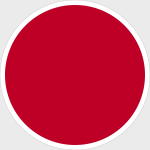DeAgostini DAWF25 Imperial Japanese Army Nakajima Ki-44-II Shoki "Tojo" Fighter - 3rd Chutai, 47th Hiko Sentai, Narimasu Airfield, Japan, 1944 [With Collector Magazine] (1:72 Scale)
"We have resolved to endure the unendurable and suffer what is insufferable."
- Japanese Emperor Hirohito speaking to the Japanese people after the atomic bombings, August 1945
 The Nakajima Ki-44 Shoki ("Demon") was a single-seat fighter-interceptor developed by the Nakajima Aircraft Company and operated by the Imperial Japanese Army from 1942 to 1945 during World War II. Its official designation is Army Type 2 Single-Seat Fighter and its Allied reporting name was Tojo.
The Nakajima Ki-44 Shoki ("Demon") was a single-seat fighter-interceptor developed by the Nakajima Aircraft Company and operated by the Imperial Japanese Army from 1942 to 1945 during World War II. Its official designation is Army Type 2 Single-Seat Fighter and its Allied reporting name was Tojo.
The design and development of the Ki-44 differed greatly to other Japanese fighters of the time, incorporating speed and rate-of-climb in preference to maneuvrability. This was a result of a need for a heavy fighter aircraft that followed a more offensive doctrine and the Ki-44 is often classified as an Air Defence Fighter. Its development ran almost in parallel to its predecessor, the lighter and nimble Nakajima Ki-43, and yet the two aircraft differed. The Ki-44 had a higher landing speed and was less maneuverable. These were concerns for pilots who would compare it to the Ki-43 or Ki-27 which were far more agile and responsive. As a result, the Ki-44 was first restricted to pilots with at least 1000 hours of flying time due to its tricky handling characteristics. However, it was later found that younger pilots who had not been instilled with the extensive aerobatic training of earlier cadres could manage the aircraft perfectly well, so the restriction was removed.
Nonetheless, the Ki-44 was the fastest climbing Japanese fighter at the time. While there was performance restrictions at high altitude, it was a useful B-29 Superfortress interceptor and is commonly associated with Home Island defence operations. It was superior to the Ki-43 in that it was capable of matching Allied aircraft in climbs and dives, giving pilots more flexibility in combat and greater pilot confidence than the Ki-43; the basic armament of four 12.7mm machine guns or two 12.7mm guns and two 20 mm cannons (or, in a few aircraft, two Ho-301 40mm cannons of limited range) was far more powerful to the older Ki-43's two 12.7mm machine guns.
Production of the Ki-44 would terminate in late 1944 in favour of the more advanced Nakajima Ki-84, and when the war ended, only three Sentai units were still equipped with them. Despite more than 1,200 aircraft built, none have survived the war.
Pictured here is a 1:72 scale diecast replica of an Imperial Japanese Army Nakajima Ki-44-II Shoki "Tojo" fighter that was attached to the 3rd Chutai, 47th Hiko Sentai, then deployed to Narimasu Airfield, Japan, during 1944.
Sold Out!
Dimensions:
Wingspan: 5-1/4-inches
Length: 5-inches
Release Date: July 2020


